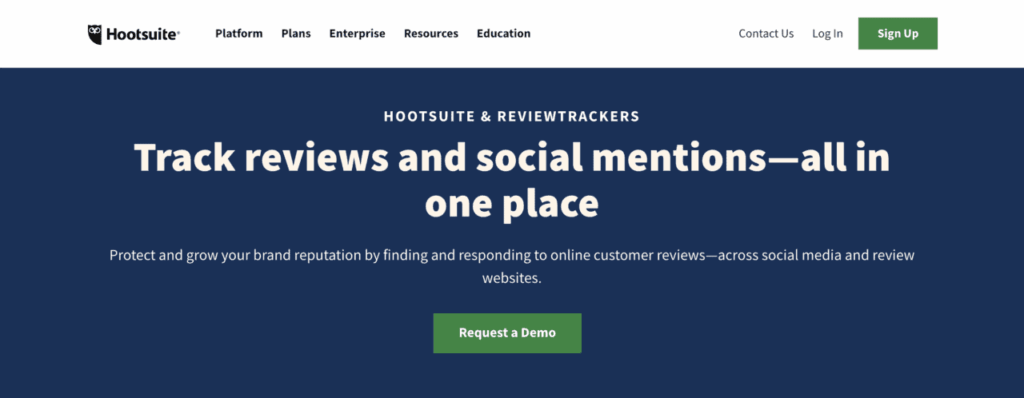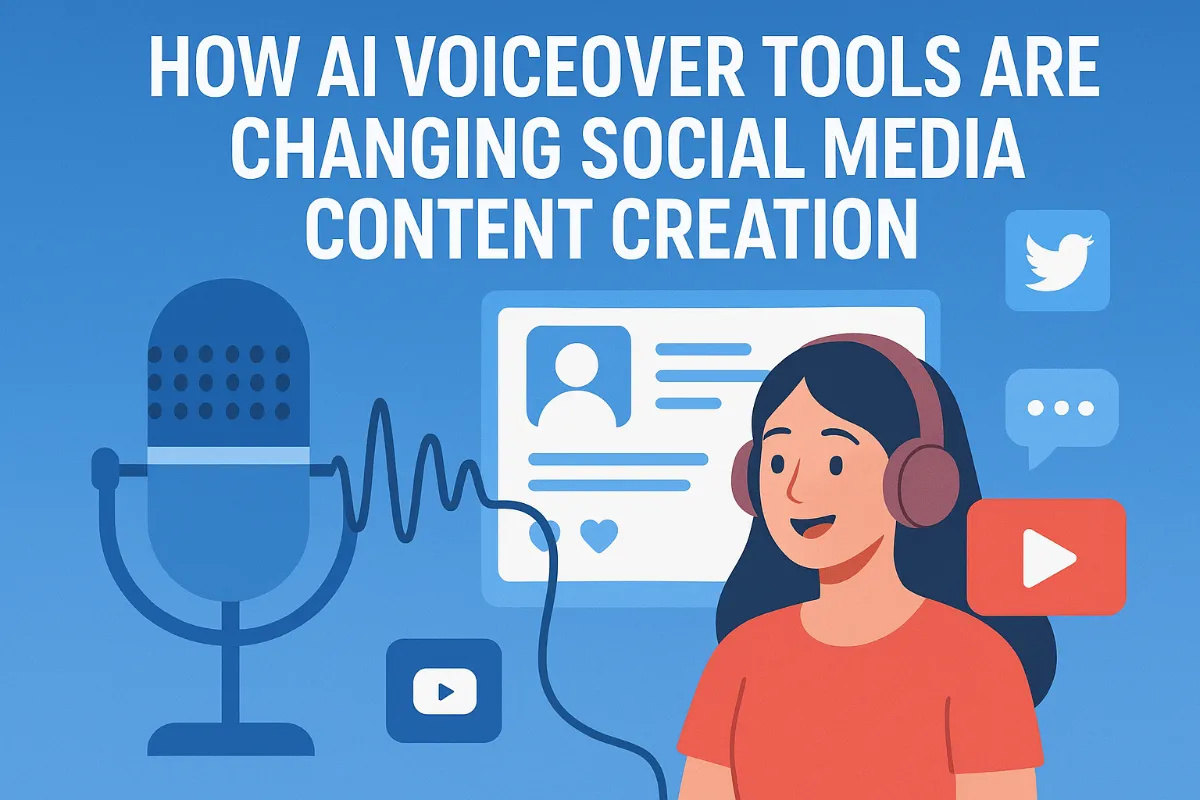Online Reputation Management: How to Manage and Monitor Your Reputation on Social Media
It’s tough to do business these days without having presence on Facebook, Twitter, YouTube, and other social media sites. We're talking about platforms like LinkedIn, Instagram, TikTok, and even niche forums depending on your industry. Businesses of every size and across every industry can benefit from social media reputation management.
By evaluating Online Reputation, you will get the answer of most important question you may think of "What people think about my business?"
There are a many misconceptions about online reputation management. Some think it’s just social media monitoring, while others believe it has something to do with public relations. In this article, I will explain role of Online Reputation Management and how to research, manage, and protect your brand’s reputation with social media.
What is Online Reputation?
Google yourself. What do you see? Are you represented fairly?
Everyone has an online reputation; Good, Bad, or Low. Online reputation management (ORM) means taking control of the online conversation and interactions. Your online reputation determines how others distinguish your business when they search for it online. Consequently, online reputation management (ORM) dynamically influences what information people will find. Its techniques and strategies ensure that people find the right materials when they look for you on the Internet.
The purpose of online reputation management is to create balance, counteract misleading trends, and allow you to put your best foot forward. ORM is not only about managing content in search engines, though. It’s also about managing negative business reviews and encouraging happy clients to contribute more positive feedback. Here, you can start by responding to negative reviews promptly and professionally, and then actively encourage satisfied customers to share their experiences, perhaps by sending a follow-up email with a direct link to your review page.
Did you know that according to BrightLocal, "Around 70% of consumers trust online reviews as much as personal recommendations"? What’s more, "Nearly half of consumers need at least a four-star rating before they choose to use a business."

This image shows someone looking at search results, which is a good way to visualize what people see when they look up your business online.
Considering these statistics, the importance of your online personal and professional reputation can’t be understated. Here are the four distinct digital marketing channels involved in ORM, channels also referred to as the PESO Model.
Paid Media
Paid media includes all marketing efforts that require payment to feature your business on external websites and networks. For ORM, this means using targeted ads to promote positive content or to push down negative search results, ensuring your brand's best foot is forward. This includes PPC advertising with Google AdWords, display ads on Facebook, and sponsored posts on industry/influencer blogs.
Earned Media
Earned media describes the coverage of your business on external web entities for which you didn’t pay. It requires you to stand out from your competition with great content, products, or services that users consider worth sharing, mentioning, reposting, and reviewing. Positive earned media, like press mentions or organic social shares, significantly boosts your brand's credibility and reputation.
Social Media
When it comes to social properties, it’s important to dedicate the resources to stay active on them by engaging in conversations and publishing fresh content regularly. As a general rule: not having a profile on a certain network is better than having an inactive one. Social media is a direct channel for engaging with customers, addressing concerns, and showcasing positive interactions, all of which build your reputation.
Owned Properties
Your business websites and blogs are properties owned by you, which means you have full control over them. Of course, the more properties you own, the higher your chances to effectively build your digital presence. These owned channels are crucial for publishing your own positive narratives, company news, and customer testimonials, directly shaping your online image.
How Is Reputation Management Different From PR?
Both public relations (PR) and online reputation management have the same goal: portraying the company in the best possible light. The main difference between the two is how they achieve that goal.
PR firms work externally, such as through advertising and coordinated media promotional efforts. It’s mostly a proactive effort to strengthen brands instead of minimizing attacks on companies (though PR firms do sometimes handle damage control).
Online reputation management, on the other hand, is most often reactive. It involves looking for and responding to potentially damaging content from other people or companies.
Most of the work that goes into ORM is handled internally by brands rather than by an external firm. This is often because internal teams have a deeper, more immediate understanding of the brand's values and can respond more quickly to emerging issues, maintaining direct control over the narrative. However, external firms can be valuable for specialized expertise or when a brand needs to scale its efforts rapidly.
Why Do You Need to Manage Your Online Reputation?
The hits a brand takes online can be numerous, but they’re often small attacks—a negative comment here, a low star rating there. None of these blows is worth a full-scale PR campaign, but they add up quickly.
You need online reputation management to take care of each of these little fires before they amount to serious damage. ORM is also important for maintaining transparency—a vital ingredient of brand loyalty in today's market.
With online reputation management, your business combats negative claims by addressing them directly and openly.
What is Social Media Reputation Management?
Social media reputation management is the process of tracking, monitoring and ultimately eliminating negative social media material about your brand to improve your name or standing. If done properly, social media reputation management builds your credibility to customers, which strengthens their trust in your brand.
7 Keys to Success in Social Media Reputation Management
If you’re just getting started with how your company manages social media reputation, read on for your keys to success and some important points to consider.
Resolve Issues that Affect Reputation
Not every piece of feedback is positive. If customer issues come up on social media and online review sites, make sure you address the situation and get back to them.
Says best-selling author and customer service expert Chip Bell:
In the customer’s mind, the clock starts when he or she posts a negative review, and your reputation drops with every hour you delay providing a response. Be honest, be apologetic, and offer the aggrieved customer an easy way to access you. For example, provide a direct message option on social media, a dedicated support email address, or a phone number for immediate assistance. Bad reviews that remain unanswered signal to other customers you are disinterested. It also fuels the perception that the negative report by an angry customer was probably accurate.
When responding to negative reviews and social media comments, be as specific as you can about the customer’s experience and communicate any changes or improvements you have made as a result of their feedback. The sooner you can get back to your customer, the greater your chances of improving the situation.
Post Engaging, Relevant Content
In uncertain times like the COVID-19 pandemic, it’s important not to let your social media pages go stale. Build your pages up and regularly post relevant content and updates like news, announcements, special offers, photos, videos, and links. As you do so, avoid being overly self-promotional. Take advantage of user-generated content and see how you can use it to improve your online reputation.
To leverage user-generated content effectively, always seek permission before sharing, clearly attribute the original creator, and highlight how it showcases real customer experiences. This builds trust and authenticity.
Also, be sure to show your willingness to engage with your community of fans and followers by liking, commenting on, and responding to their activity on your profiles.
Use a Social Listening Tool
It can be extremely difficult to track every single conversation about your business happening on every social media channel, especially if you’re managing a business with multiple locations.
Investing in a social listening tool like Hootsuite can save you plenty of time and effort. With it, you can schedule posts, track conversations and mentions, monitor online reviews, and even create customizable streams so that you’re able to effectively listen to the voice of the customer on social media.

Focus on Increasing Reviews, Not Likes and Followers
We’re not saying you should delete your local business page on Facebook or stop checking people’s follow activity, @mentions, and DMs.
By all means, continue to take control of your social media presence and engage with potential and existing customers. A strong social media strategy can also improve your performance on search engines and give you more control over what’s being said about your business online.
At the same time, pay equal amount of attention to your online reviews. As part of your social media reputation management efforts, make sure you tune into what customers are saying on business review sites like Yelp, Google, Tripadvisor, and Facebook. Apart from monitoring reviews, invest in efforts that generate more feedback and reviews, instead of simply increasing your likes, hearts and followers. This is because reviews directly influence purchasing decisions and build trust in a way that likes and followers simply can't. Consumers see reviews as authentic endorsements from peers, which is far more persuasive than a simple follower count.
Pay Close Attention to Google and Facebook
Among the top two sites where customers post online reviews are Google and Facebook. According to the Online Reviews Survey, Google is the online review site where consumers are reading the most reviews: 63.6% of consumers read reviews on Google before visiting a business.
While it’s important to focus on as many social media channels as you can, pay special attention to Google and Facebook, two platforms where the largest share of consumers are reading and posting feedback about your business.
Share Your Best Reviews on Social Media
If you consistently receive five-star ratings and glowing reviews on review websites, don’t hesitate to show them off. Share your best reviews on your Facebook, Twitter, and Instagram profiles, or even on your company blog.
Remember: the impact of user-generated content is more powerful and effective than loud sales messages or promotional brand content. Sharing positive reviews on social media drowns out negative noise, and it can even make a positive impact on your search visibility.
Transform Social Media Data into Insights
Savvy brands are extracting insights from social media comments and customer-generated reviews in order to gain insights on the customer experience.
By tapping into your precious social media data, you can support the objectives of your social media reputation management strategy and make smart business decisions that will earn the trust of potential and existing customers. For instance, you might identify common customer pain points that need addressing, spot emerging sentiment trends to get ahead of potential issues, or pinpoint areas for product or service improvement. These insights directly inform your ORM strategy by highlighting what's working, what's not, and where to focus your efforts.
The world’s most successful brands tap into their data in order to achieve a more accurate view of the customer experience. Through customer experience analytics, they have the ability to understand — in seconds and at scale — what customers really mean whenever they share their thoughts in their own words.
Feel free to share your experiences or tips in the comments below!





